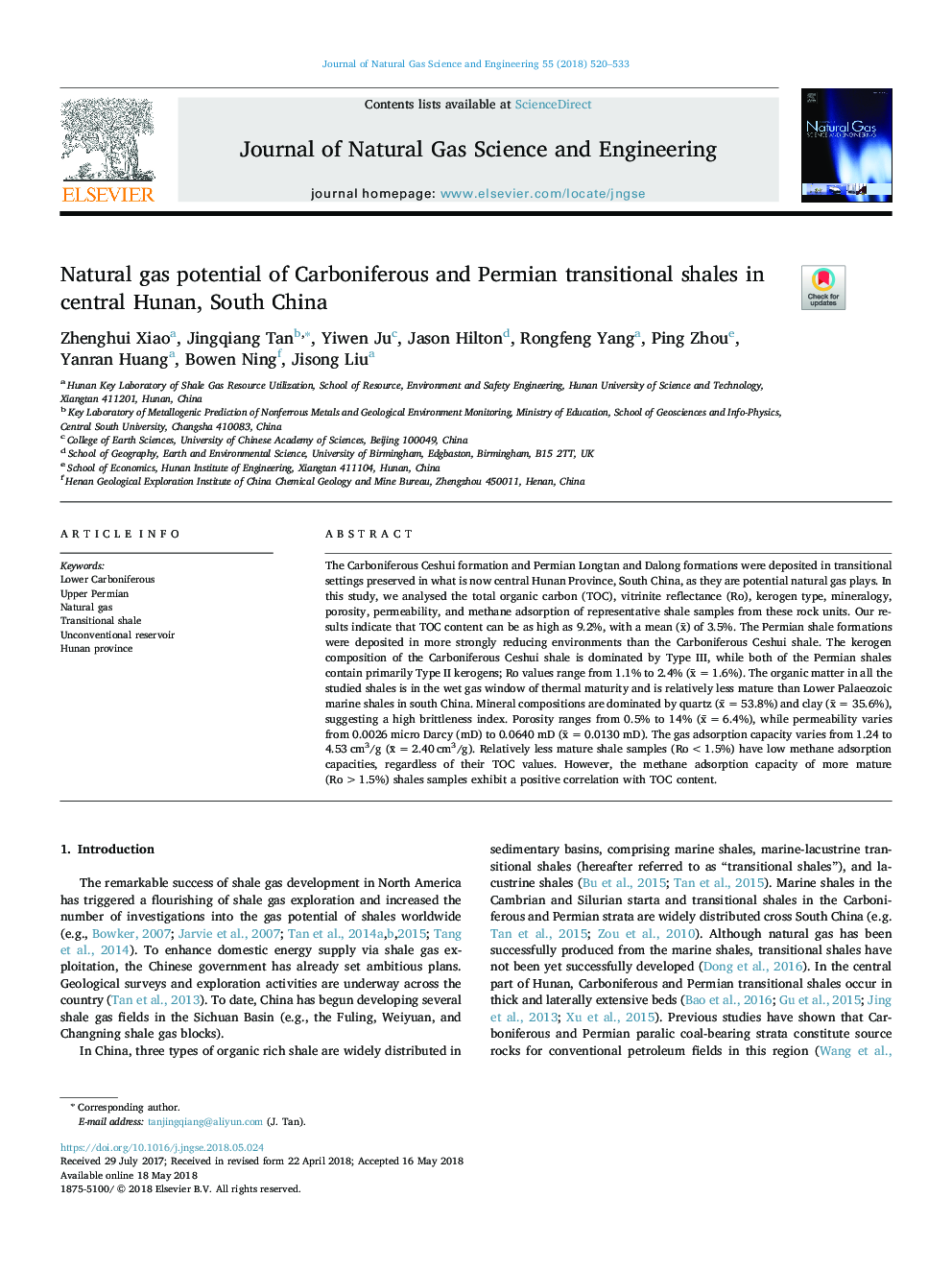| Article ID | Journal | Published Year | Pages | File Type |
|---|---|---|---|---|
| 8128030 | Journal of Natural Gas Science and Engineering | 2018 | 14 Pages |
Abstract
The Carboniferous Ceshui formation and Permian Longtan and Dalong formations were deposited in transitional settings preserved in what is now central Hunan Province, South China, as they are potential natural gas plays. In this study, we analysed the total organic carbon (TOC), vitrinite reflectance (Ro), kerogen type, mineralogy, porosity, permeability, and methane adsorption of representative shale samples from these rock units. Our results indicate that TOC content can be as high as 9.2%, with a mean (xÌ) of 3.5%. The Permian shale formations were deposited in more strongly reducing environments than the Carboniferous Ceshui shale. The kerogen composition of the Carboniferous Ceshui shale is dominated by Type III, while both of the Permian shales contain primarily Type II kerogens; Ro values range from 1.1% to 2.4% (xÌâ¯=â¯1.6%). The organic matter in all the studied shales is in the wet gas window of thermal maturity and is relatively less mature than Lower Palaeozoic marine shales in south China. Mineral compositions are dominated by quartz (xÌâ¯=â¯53.8%) and clay (xÌâ¯=â¯35.6%), suggesting a high brittleness index. Porosity ranges from 0.5% to 14% (xÌâ¯=â¯6.4%), while permeability varies from 0.0026 micro Darcy (mD) to 0.0640 mD (xÌâ¯=â¯0.0130 mD). The gas adsorption capacity varies from 1.24 to 4.53â¯cm3/g (xÌâ¯=â¯2.40â¯cm3/g). Relatively less mature shale samples (Ro<1.5%) have low methane adsorption capacities, regardless of their TOC values. However, the methane adsorption capacity of more mature (Ro>1.5%) shales samples exhibit a positive correlation with TOC content.
Keywords
Related Topics
Physical Sciences and Engineering
Earth and Planetary Sciences
Earth and Planetary Sciences (General)
Authors
Zhenghui Xiao, Jingqiang Tan, Yiwen Ju, Jason Hilton, Rongfeng Yang, Ping Zhou, Yanran Huang, Bowen Ning, Jisong Liu,
